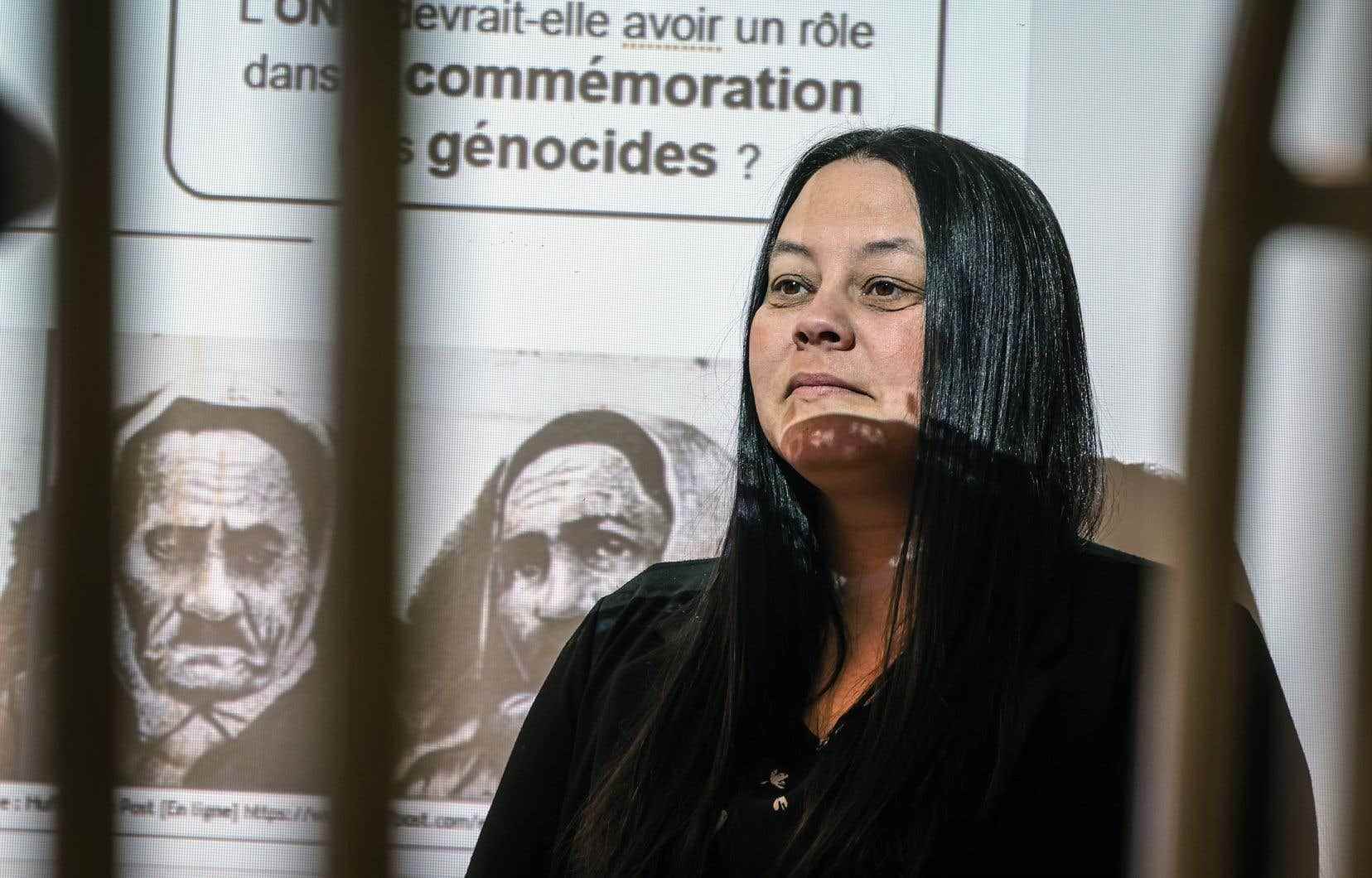Why do we just talk about the history of Quebec and Canada in our classes? We talk about world peace, but it’s impossible if we don’t know the history of others”, exclaims Isabella, indignant, from the very last row of the class.
“It’s because it doesn’t affect us directly,” another student replies immediately. A confused but vibrant exchange ensues, in which several students participate; some applause resounds in the stride. That Monday morning, in Geneviève Audet’s class, we tackled a delicate and complex subject: genocide.
Based on the teaching guide “Studying Genocide”, the first of its kind in Canada intended for secondary school students and officially launched last April, this teacher in a school in the northern suburbs of Montreal is beginning a series of four courses on the subject. For more than an hour, questions swirl among this group of attentive students.
It is wrong to say that they are not able to talk about it, that they are not interested. When we take the time, they are the ones who make us evolve.
By addressing the Bosnian genocide, the group of twenty students will have several lessons to take a position on the following question: should the UN have a role to play in the commemoration of the genocides? “Stay open, because your opinion may change over the next four lessons,” warns the dynamic teacher, accompanied in class by an educational advisor.
The interest of young people in the subject is undeniable. Very quickly, their questions branch off into related issues, such as racism or mass killings. “Can the Polytechnique attack be considered a genocide? asks one student, while another asks if a genocide is necessarily created from racism, or if there are genocides of animals.
Patient, pedagogue, Mme Audet answers the students’ questions with delicacy, while admitting that he does not have all the answers. When Isabella, on leaving the small classroom where the rows of three desks are lined up, asks her “if anti-white racism doesn’t exist, does that mean that a genocide against white people won’t could ever exist? », Mme Audet admits to being annoyed.
“As a teacher, you have to set limits for yourself, otherwise it can get out of hand,” she confides in the empty classroom once the students have left for dinner. But although the subject is shocking, the students approached it today with curiosity and open-mindedness, much to the teacher’s satisfaction. “It’s wrong to say that they are not able to talk about it, that they are not interested, she believes. When we take the time, they are the ones who make us evolve. »
The idea for these courses began on a winter day, when Geneviève Audet saw, on a Facebook group intended for social universe teachers, an announcement concerning a training course in Montreal on the teaching of genocides. Places being limited, she registered immediately. “This training not only touched me, but it taught me things,” she confides in front of her group.
She then undertook, with the help of an educational consultant affiliated with the Center de services scolaire, to adapt the guide for the contemporary world course. While the complete guide presents nine genocides that occurred in the twentieth century (including that of the First Peoples in Canada), she chose to teach that of the Muslims in Bosnia. “My uncle was a Blue Helmet and went to Bosnia,” she says.
A long-standing project
If this educational guide was able to see the light of day, it is primarily because of the fight led by the president and founder of the Foundation for the Study of Genocide and daughter of Holocaust survivors, Heidi Berger. “When I gave training on the Holocaust in schools, I noticed the emotional reaction of the students to the genocide and their shocking lack of information on the subject,” she explains in an interview.
This is what motivated her to create the foundation in 2014, then the educational guide for secondary school students after “years of discussion” with the Ministry of Education. Officially launched in April, the content has been tested by a few teachers as part of pilot projects. Training sessions for volunteer teachers were given this spring. “The second step in the mission of our foundation is to make the guide mandatory”, explains Heidi Berger, while recalling that we must proceed “one step at a time”.
The tool aims to provide teachers with adequate tools, in particular those who give courses in the contemporary world and ethics and religious culture, or who wish to address this subject in their class. “If a student asks his teacher what is happening in Ukraine, there with the guide, we think that the teachers will be more informed and at ease discussing a genocide”, she believes.
The content was developed by professors Sivane Hirsch and Sabrina Moisan, respectively professor in the Department of Educational Sciences at the University of Quebec at Trois-Rivières and professor in the Department of Pedagogy at the Faculty of Education of the University of Sherbrooke.
“Our thinking is that if we offer quality content that meets the needs of teachers and that does not set aside the sensitive aspects of these issues […]it will encourage teachers to move forward,” said Ms.me Hirsch.
The research duo now want to think about ways to talk about racism at school. To bring into the classroom the analysis of these hot topics, but which do not necessarily appear in the official school curriculum.
